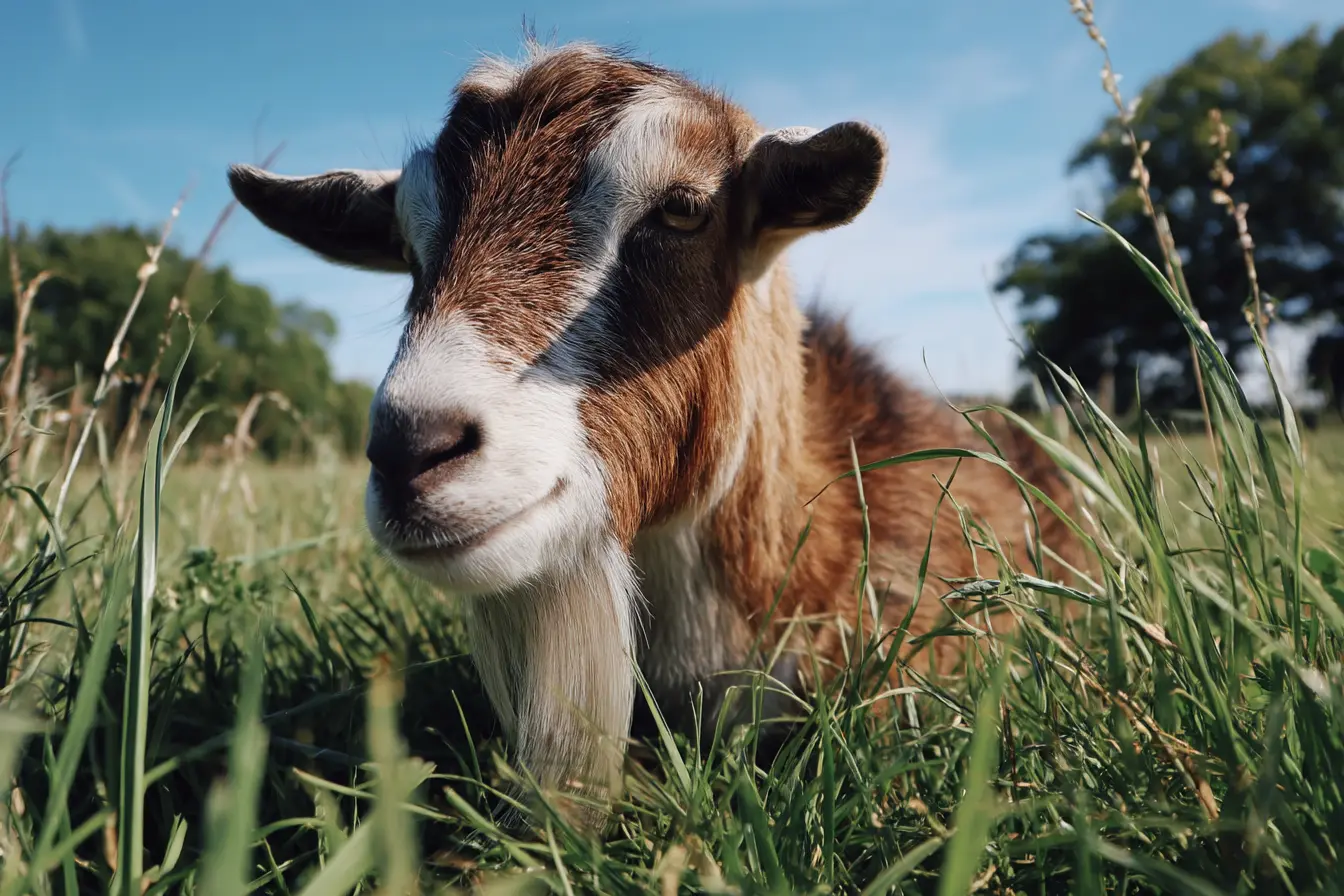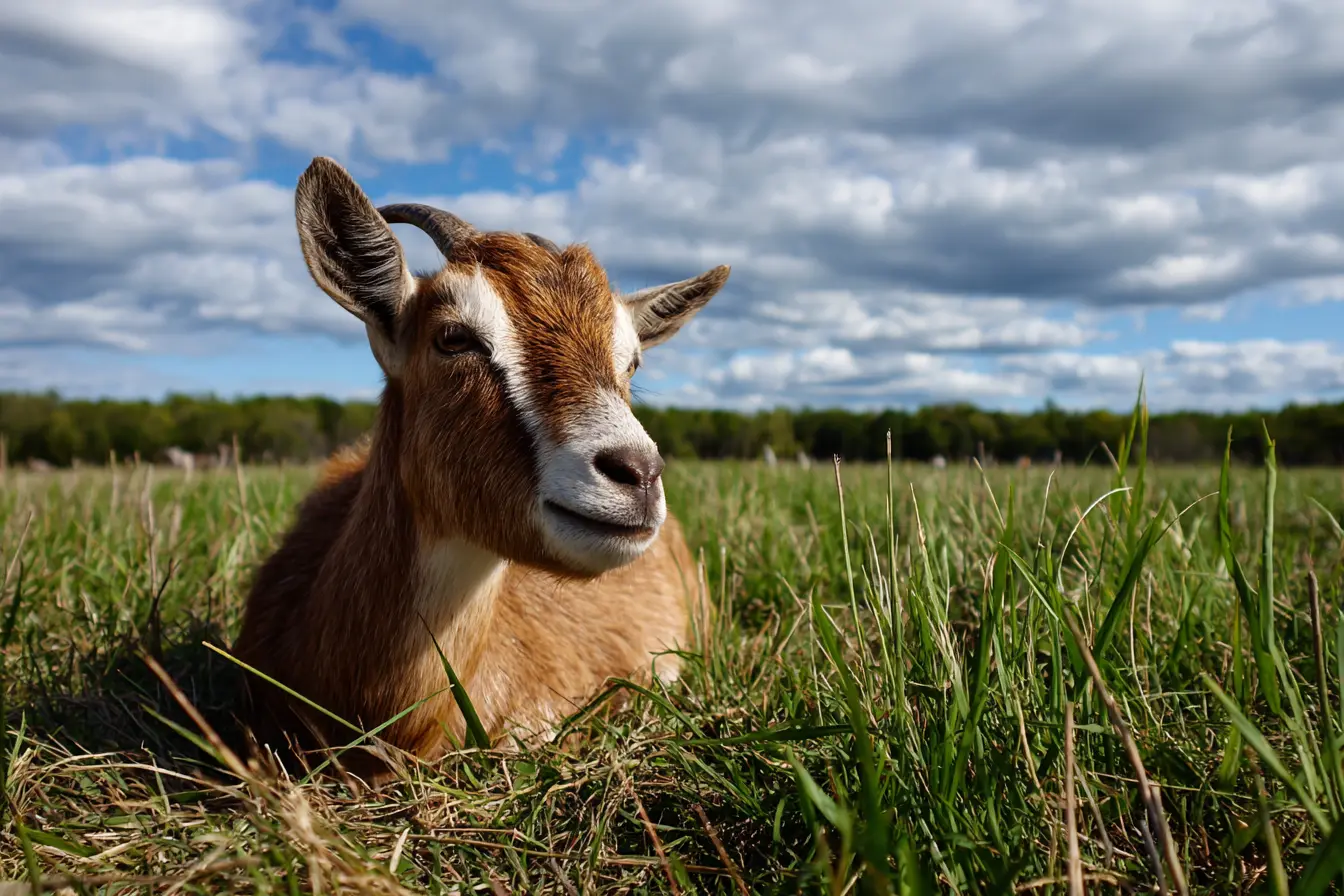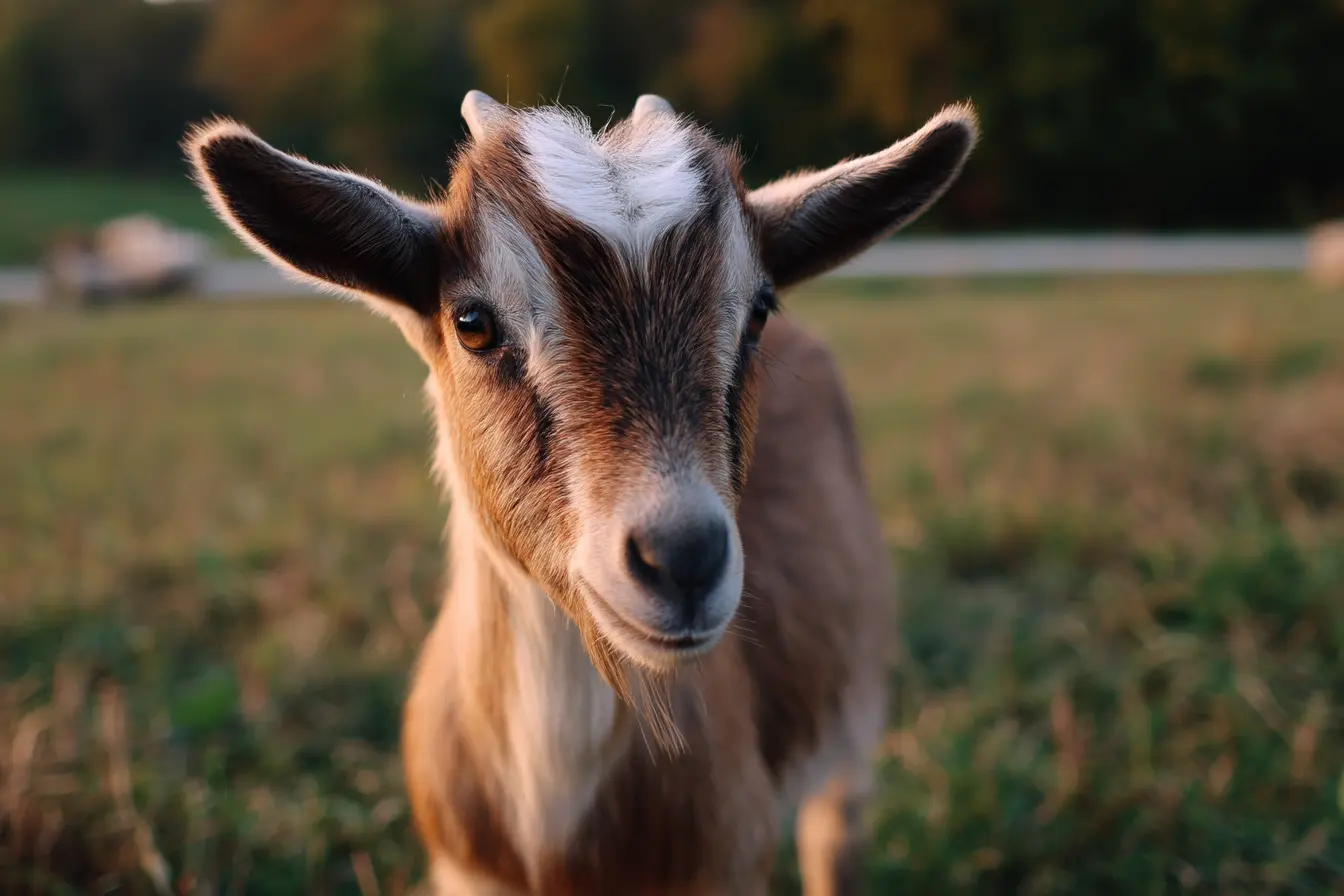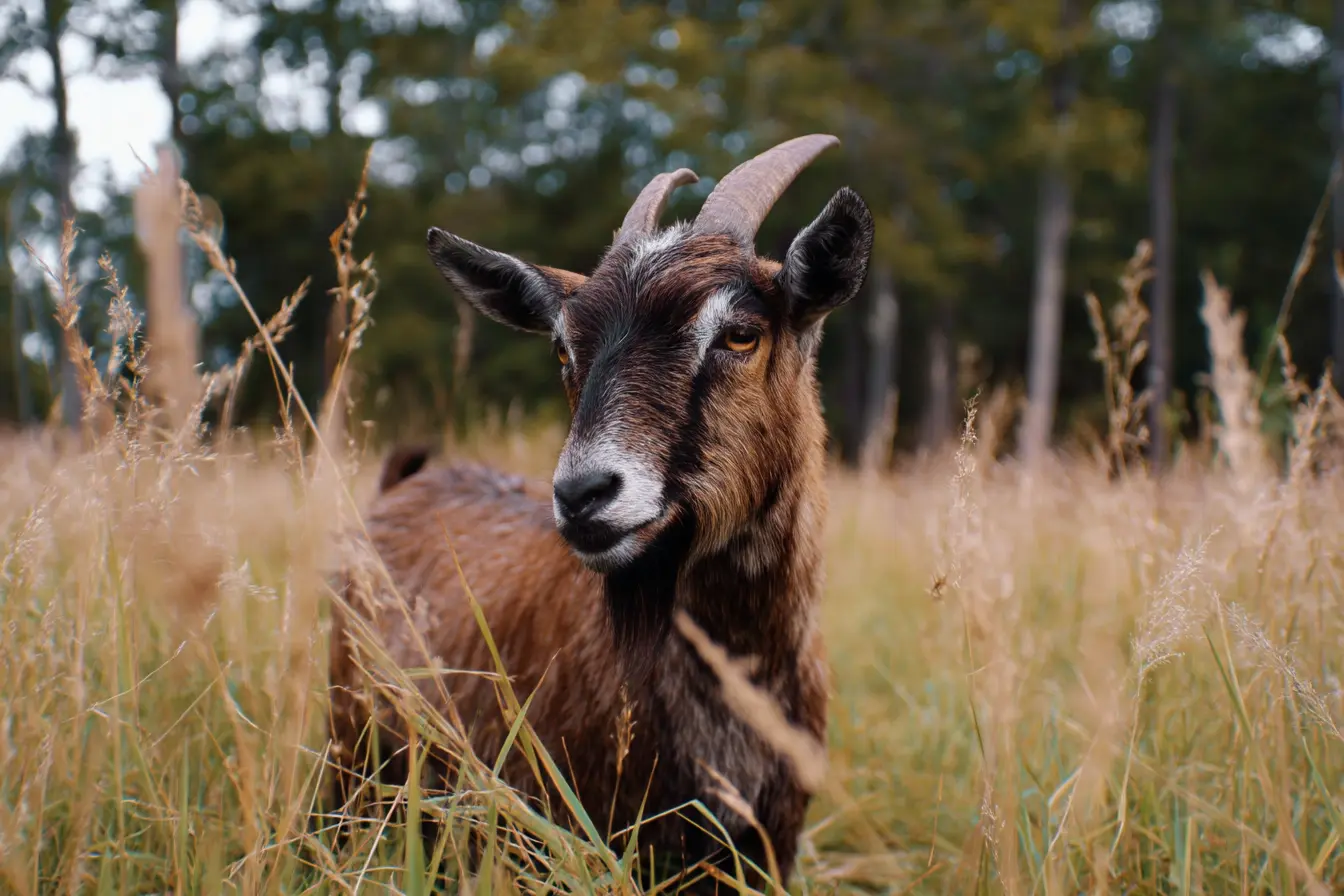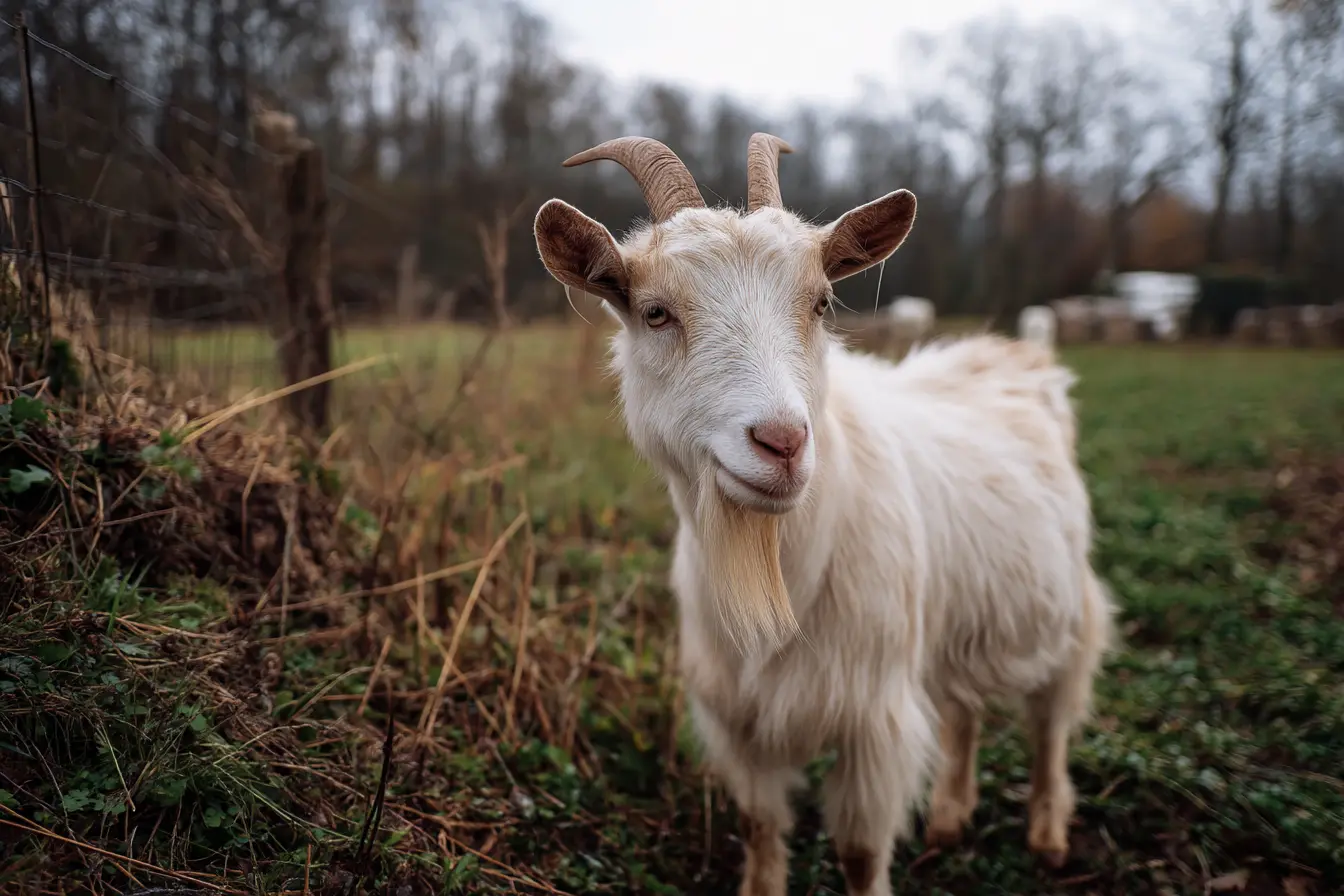
A Complete Guide to Caring for Saanen Goats
Saanen goats are one of the most popular dairy goat breeds in the world, known for their high milk production, gentle temperament, and adaptability to different environments. Originally from Switzerland, Saanens are now kept by farmers and smallholders across the UK, making them a fantastic choice for new goat owners looking to produce milk or raise goats as a hobby.
If you’re considering keeping Saanen goats, this guide will provide you with everything you need to know about caring for this breed, including housing, feeding, health care, and breeding.
A Brief History of Saanen Goats
The Saanen goat breed originates from the Saanen Valley in Switzerland, where they have been bred for centuries for their exceptional milk production. The breed was first exported to the UK in the late 19th century and quickly became a favourite among farmers for their high milk yields and docile nature.
Today, Saanen goats are one of the most popular dairy goat breeds worldwide and are often crossbred to improve milk production in other breeds.
Key Characteristics of Saanen Goats
Saanen goats have several distinctive traits that make them stand out from other breeds.
- Size: Saanens are large goats, with adult females (does) weighing around 60-70kg and males (bucks) weighing up to 90kg.
- Coat: Short, white, and fine-textured; provides some sun protection but still leaves them vulnerable to sunburn.
- Ears: Upright ears.
- Temperament: Gentle, calm, and friendly, making them easy to handle.
- Milk Production: Known for their high milk yields, Saanen does can produce up to 3-4 litres of milk per day.
- Adaptability: Saanens can adapt to different climates, but they thrive best in temperate conditions with access to shade.
Housing for Saanen Goats
Providing proper housing for your Saanen goats is essential to keep them comfortable, healthy, and protected from the elements.
Shelter Requirements
-
Size: Ensure the shelter is spacious enough to accommodate your goats comfortably. A good rule of thumb is at least 1.5 square metres per goat.
-
Ventilation: The shelter should be well-ventilated to prevent respiratory issues, but it should also be draught-free to protect goats from cold winds.
-
Bedding: Use straw or wood shavings as bedding to keep the shelter dry and warm. Clean the bedding regularly to maintain hygiene.
-
Protection from Sun: Saanen goats are prone to sunburn due to their white coats. Ensure they have access to shaded areas, especially during hot weather.
Fencing
- Secure Fencing: Saanens are curious and can be escape artists. Use strong, secure fencing that is at least 1.2 metres high. Electric fencing can be useful for keeping them contained.
- Grazing Areas: Provide a safe, spacious grazing area for your goats to browse. Rotating pastures helps maintain healthy grazing areas and reduces the risk of parasite build-up.
Feeding Saanen Goats
A balanced diet is essential for keeping your Saanen goats healthy and ensuring high milk production.
Diet
- Hay and Forage: The majority of a Saanen goat’s diet should consist of good-quality hay or forage. This provides essential fibre to keep their digestive system healthy.
- Concentrates: Supplement their diet with goat-specific concentrates, especially for lactating does, to provide additional energy, protein, and minerals.
- Fresh Vegetables: You can also offer fresh vegetables and fruits as treats, but avoid toxic plants like rhubarb, potatoes, and azaleas.
Water
- Goats need constant access to fresh, clean water. Lactating does, in particular, will drink a lot of water to support milk production.
Mineral Supplements
- Provide a mineral block or loose minerals formulated for goats. Saanens require essential minerals such as calcium, phosphorus, and selenium to maintain health and milk production.
Breeding Saanen Goats
Saanen goats are known for their strong reproductive performance and make excellent mothers.
Breeding Tips
- Age to Breed: Does can be bred from around 8-12 months of age once they have reached 60% of their adult weight.
- Gestation Period: The gestation period for goats is approximately 150 days (5 months).
- Kidding: Provide a clean, warm kidding area for the doe to give birth. Saanens typically have one to three kids per litter.
- Colostrum: Ensure that newborn kids receive colostrum (the first milk) within the first few hours after birth to boost their immune system.
Health Care for Saanen Goats
Keeping your Saanen goats healthy is essential for their wellbeing and productivity. Regular health checks, vaccinations, and parasite control are all part of good goat management.
Vaccinations
Work with your vet to develop a vaccination schedule. Core vaccinations typically include:
- Clostridial diseases (e.g., tetanus, enterotoxaemia)
- Pasteurellosis
Deworming
Regular deworming is necessary to control internal parasites. Use faecal egg counts to determine the parasite burden and avoid overusing dewormers to prevent resistance.
Hoof Care
- Trimming: Saanen goats’ hooves need regular trimming to prevent overgrowth and lameness. Check their hooves every 4-6 weeks.
- Foot Rot Prevention: Keep their shelter and grazing areas dry to reduce the risk of foot rot.
Common Health Issues
- Mastitis: A bacterial infection of the udder. Keep the milking area clean and maintain good hygiene during milking.
- Sunburn: Due to their light-coloured coats, Saanens are prone to sunburn. Ensure they have access to shade or apply animal-safe sunblock on particularly hot days.
- Bloat: Ensure your goats have a consistent diet and avoid sudden changes in feed to reduce the risk of bloat.
Behaviour and Handling
Saanen goats are known for their calm and friendly temperament, making them an ideal choice for new goat owners.
- Calm Approach: Approach your goats calmly to avoid startling them. Saanens are generally docile but can be curious and playful.
- Positive Reinforcement: Use treats to build trust and encourage cooperation.
- Training: Goats are intelligent and can be trained to follow basic commands. Regular handling from a young age will make them easier to manage.
Why Choose Saanen Goats?
There are several reasons why Saanen goats are a popular choice for both smallholders and commercial farmers:
- High Milk Production: Saanens are renowned for their high milk yields, producing up to 3-4 litres of milk per day on average. Their milk is mild in flavour and has a high butterfat content.
- Adaptability: They can thrive in various climates and farming systems, although they prefer temperate conditions.
- Docile Temperament: Saanens are calm, friendly, and easy to handle, making them suitable for beginners.
- Long Lifespan: With proper care, Saanen goats can live for 10-12 years.
Final Thoughts
Saanen goats are an excellent choice for new goat owners who are interested in dairy production. Their gentle nature, high milk yields, and adaptability make them a rewarding breed to keep. By providing proper housing, a balanced diet, and regular health care, you can ensure your Saanen goats remain healthy and productive.
Always work closely with your vet to establish a health management plan, and enjoy the rewarding experience of raising this exceptional dairy breed.
Vets near you
Speciality vets
- Aquatics vet specialists
- Birds vet specialists
- Camelids vet specialists
- Cats vet specialists
- Cattle vet specialists
- Deer vet specialists
- Dogs vet specialists
- Equines vet specialists
- Exotic vet specialists
- Goats vet specialists
- Pigs vet specialists
- Poultry vet specialists
- Sheep vet specialists
- Small Mammals vet specialists
- Wild vet specialists
